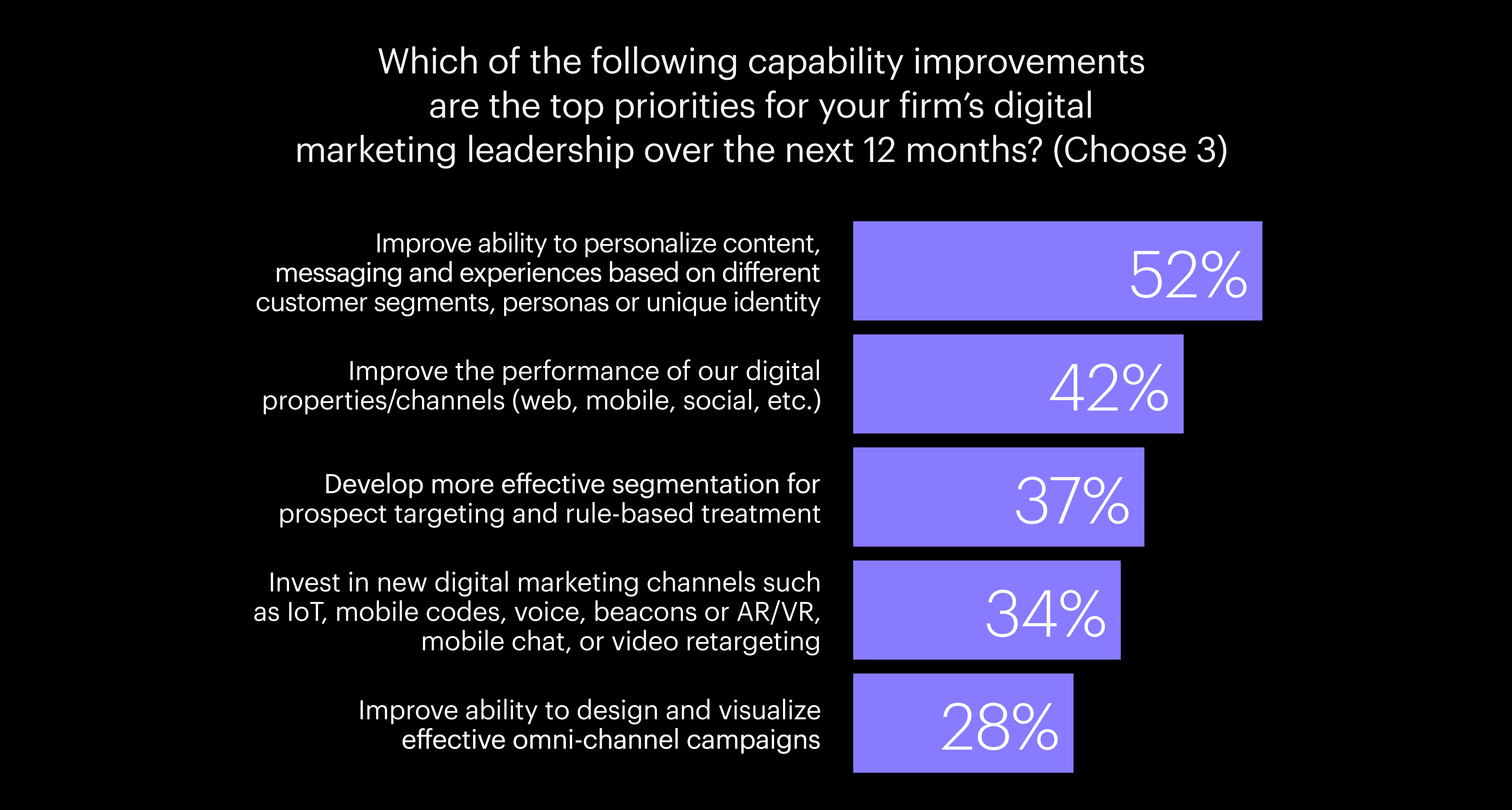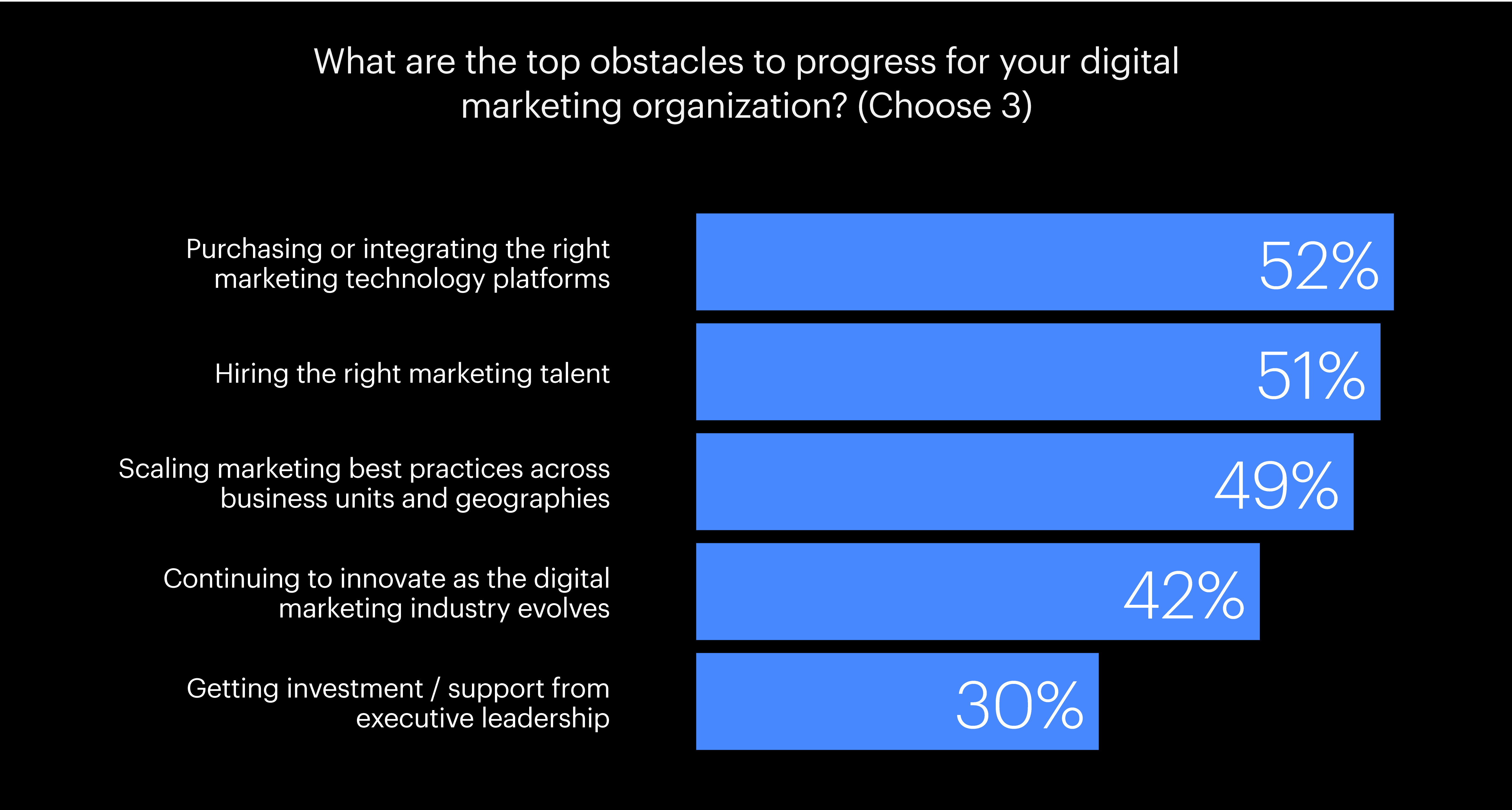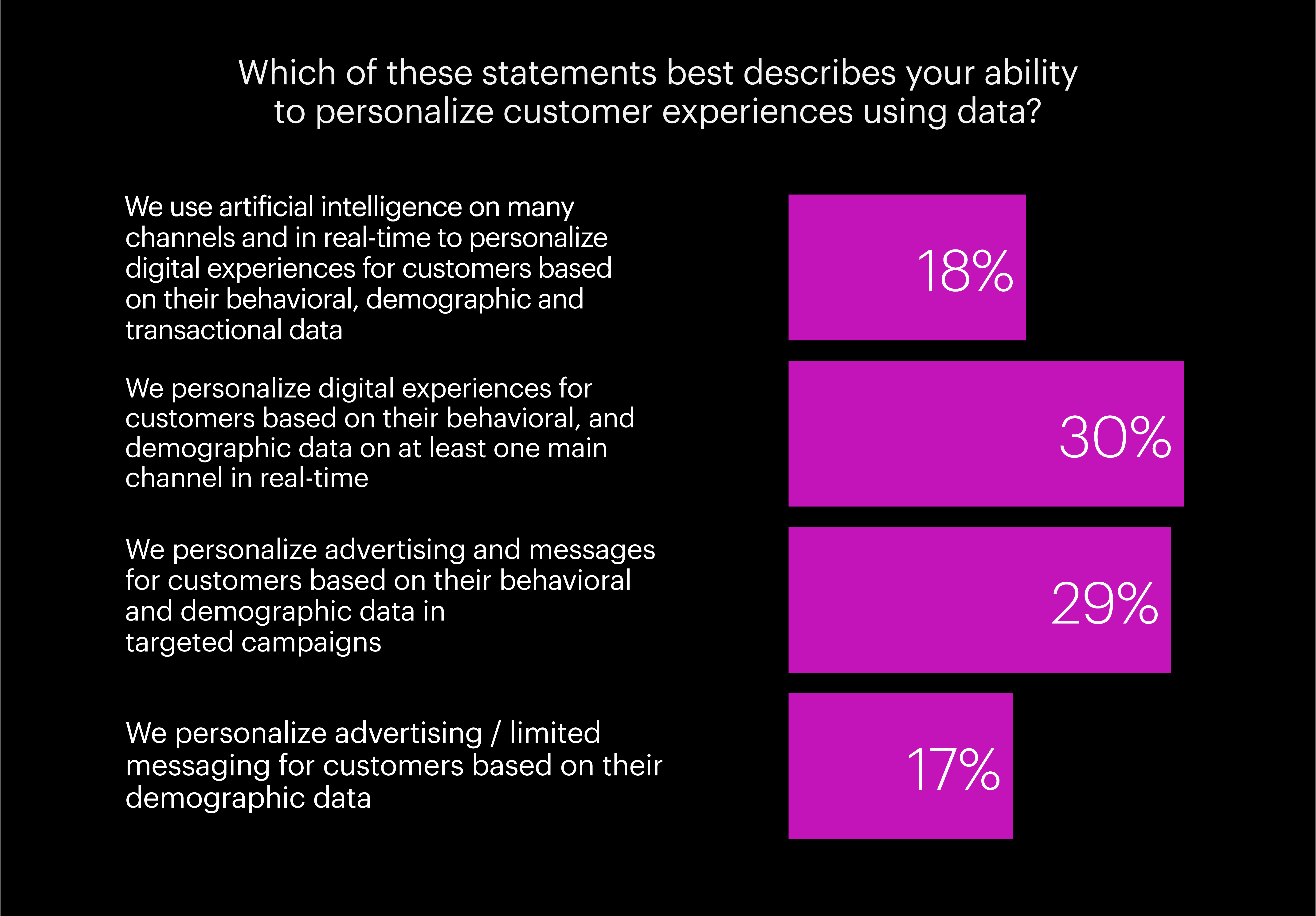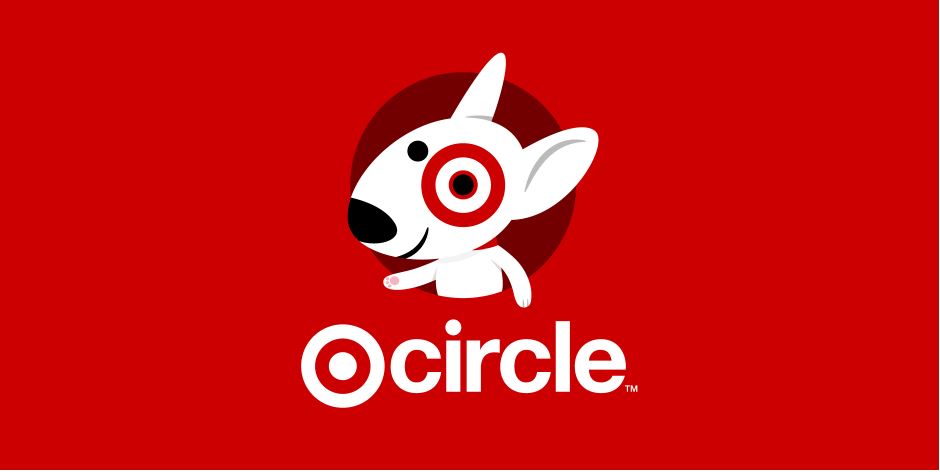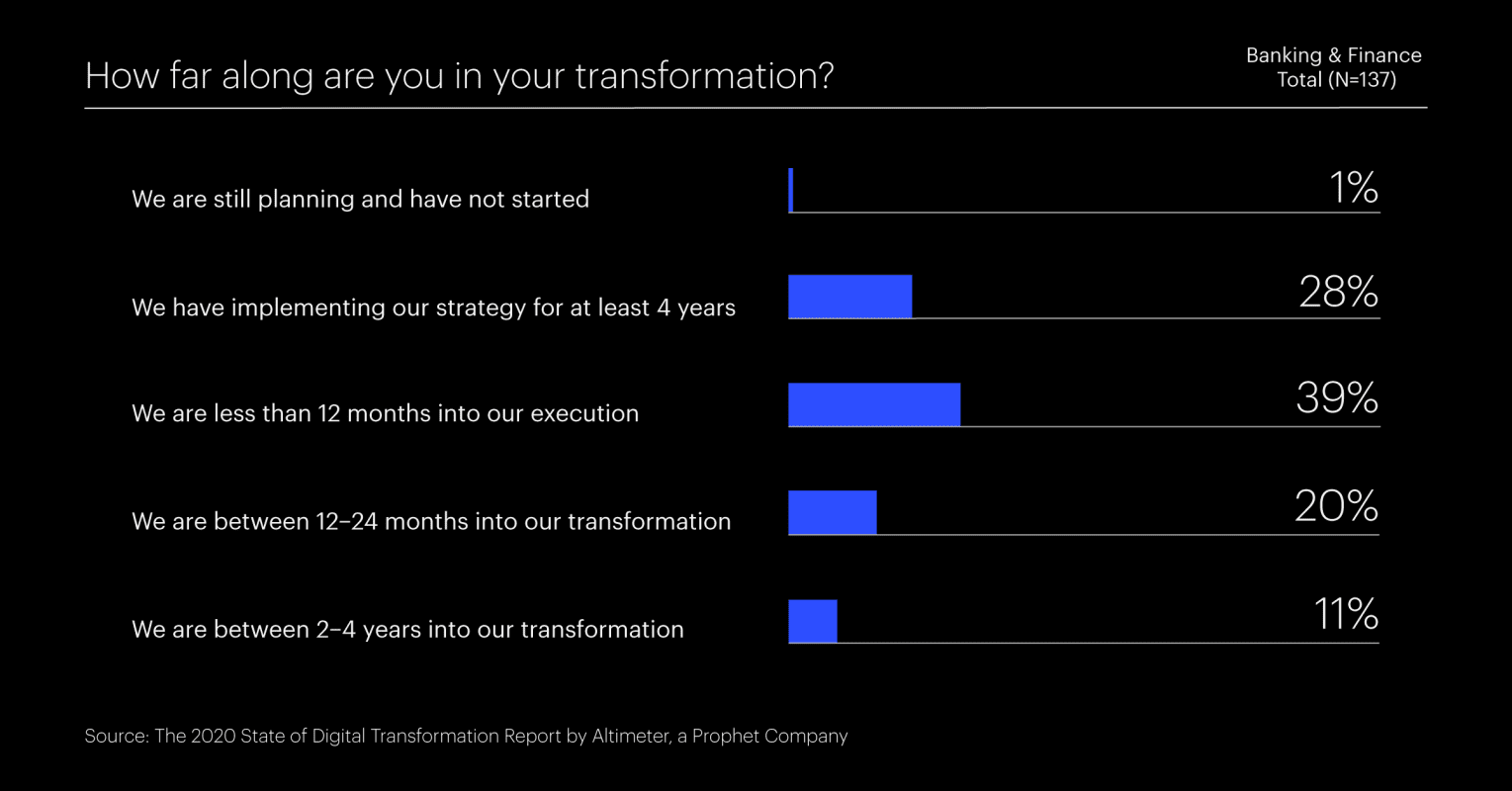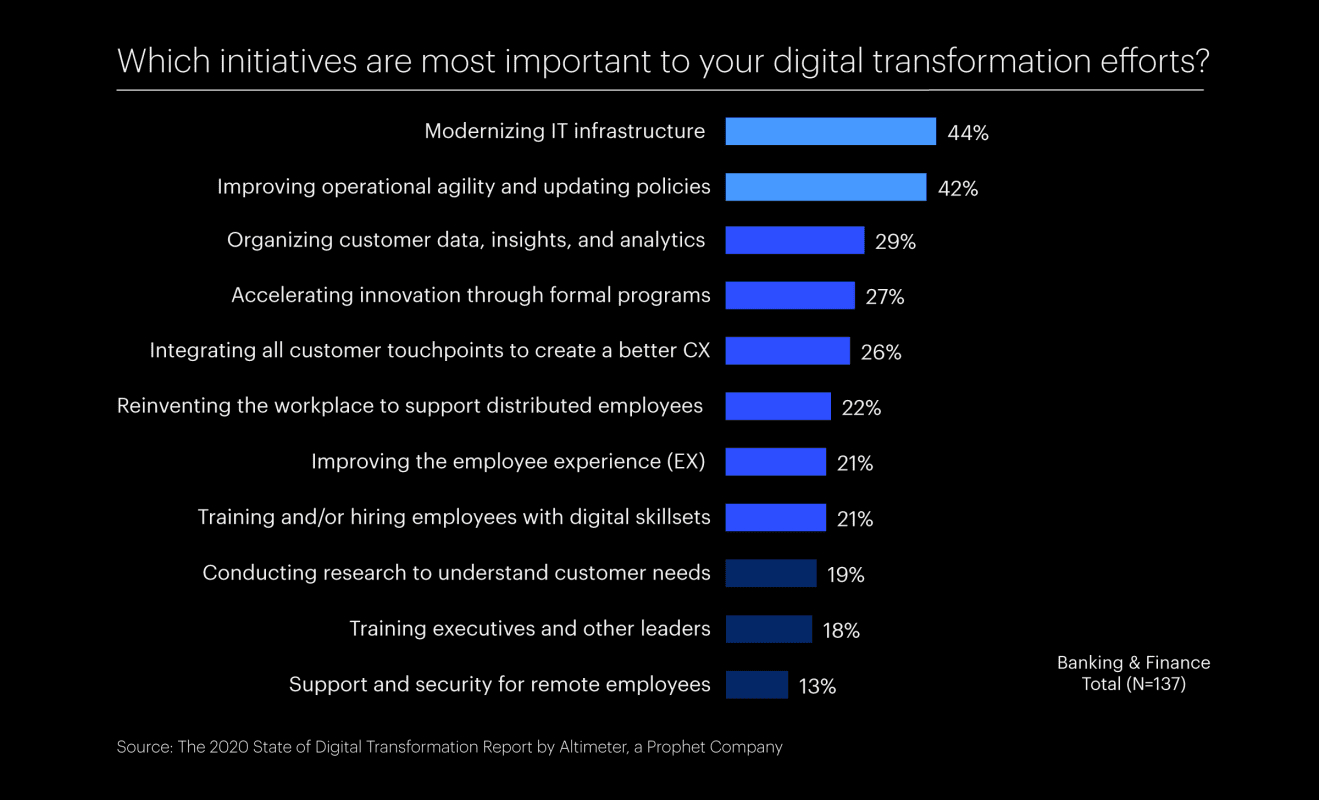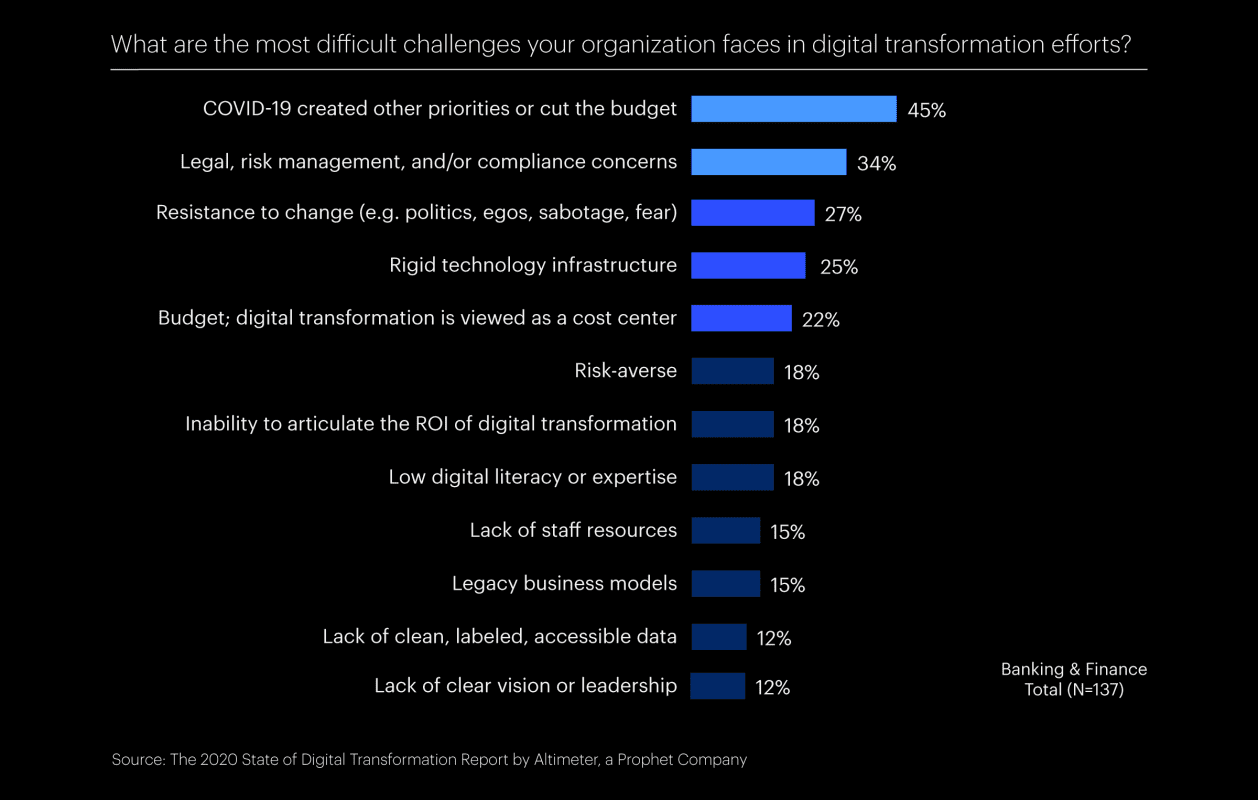BLOG
Busting the Myth That B2B Companies Are Digital Laggards
We examined 26 criteria, and find B2B companies are holding their own.
New research shows B2B companies are on par with their B2C counterparts and should look to B2B digital leaders for best practices.
The online world is full of warnings that B2B companies have fallen behind B2C companies when it comes to digital transformation. However, our new report, The 2020 State of Digital Transformation in B2B, clearly shows that B2B companies are on par with their B2C counterparts across five stages of digital maturity. This work is based on a comparison of 170 B2B companies with 238 B2C organizations and 160 B2B2C firms based on a survey conducted by the industry analysts at Altimeter, a Prophet company.
Five Stages of Digital Maturity
Digital maturity was determined by evaluating the relative adoption of digital practices across twenty-six criteria grouped into five areas: Leadership and culture, customer experience, marketing and sales, technology and innovation, and data and artificial intelligence. To understand the impact of digital transformation maturity, we grouped all of the respondents into one of five transformation stages based on their maturity scores (see Figure 1). Click here to see a deeper exploration of digital maturity in the full report.

Sixty-nine percent of all companies (B2B, B2C and B2B2C) have moved past the initial stages of digital transformation maturity and are investing in digital technology and data to accelerate growth and improve productivity. Two-thirds of these more mature companies are in stage three where they are focused on operationalizing the use of platforms and data at scale and putting them to work to drive growth. The most mature companies, 25 percent of total respondents in stages four and five, are characterized by efforts in integrating operations to deliver more personalized experiences and using emerging technologies such as AI to redesign customer experiences and offer digital services to accelerate growth. Time is running out for the laggards in steps one and two while those companies in stage three must turn their efforts into impact so they can justify their investment and continue to accelerate progress.
Digital Maturity is a Better Predictor of Capabilities and Plans Than Customer Type
Our study revealed that stages of digital maturity are better predictors of digital capability building, investment in technologies or utilization of advanced digital platforms and data. Differences between B2B and B2C companies on a broad range of digital transformation plans and practices become small once responses are controlled for the level of digital maturity.
“The most mature is taking a more opportunistic approach compared to those who are still struggling to put in place basic digital capabilities.”
B2B2C companies are more likely to be more digitally mature (41% in stages 4 and 5) than either B2B or B2C companies; probably because they must build capabilities to address both business and consumer audiences.

Digital Maturity Matters
Organizations that are furthest down the path of digital transformation are best able to turn uncertainty into a competitive advantage. Their response to the pandemic is illustrative. The most mature are taking a more opportunistic approach compared to those who are still struggling to put in place basic digital capabilities. While eighty-two percent of stage one through four organizations are continuing or pivoting their transformation efforts, seventy percent of the most digitally mature companies are accelerating their digital transformation efforts (see Figure 3). They recognize that disruption is a time to step forward not back and have the confidence in their digital capabilities to capitalize on the situation.

FINAL THOUGHTS
B2B companies should shift their search for best practices from B2C companies to more digitally mature B2B companies. It is easier and more effective to replicate best practices from one B2B company to another and maturity is a better predictor of outcomes than customer type. B2B companies who are digital laggards (stages 1 and 2) should look to the examples of companies that are operationalizing and scaling their digital efforts (stage 3). B2B companies can look to their more mature counterparts for insights into how to integrate, personalize and used advanced technologies to drive impact and become more digitally mature.
Want to know where your company stands on its digital transformation journey? Download the 2020 State of Digital Transformation in B2B to determine your next steps and contact us.


